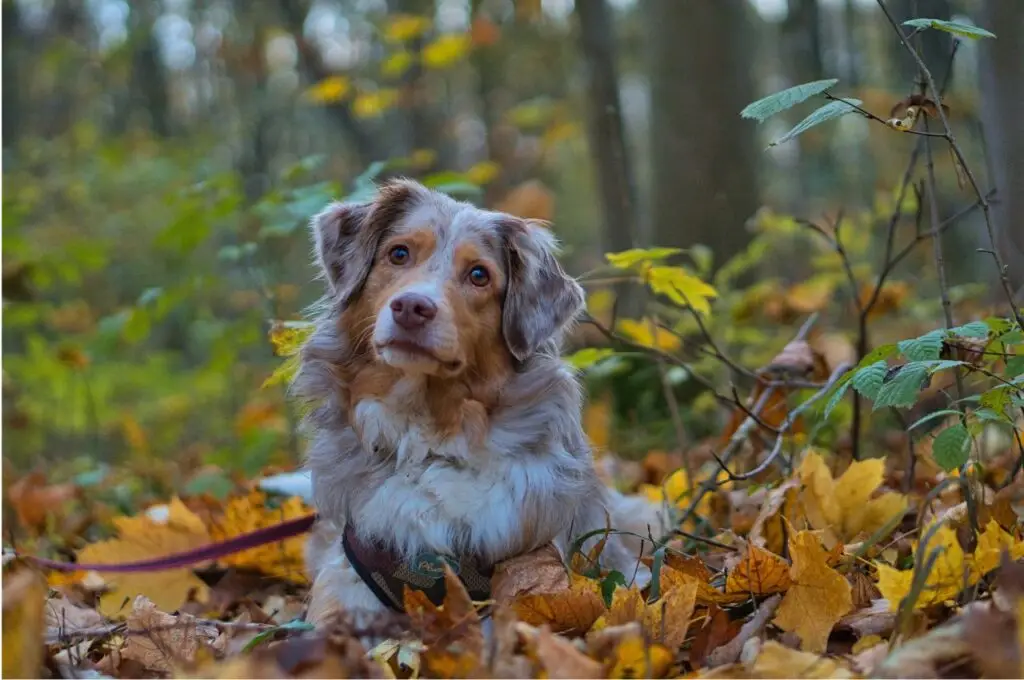Lost pets come home with Peeva.
Lost in the Woods? How to Track Down Your Adventurous Pup!
When your beloved dog dashes into the dense woods and doesn’t come back when called, it’s easy to panic.
But with the right knowledge and tactics, you can increase your chances of a happy reunion. Let’s explore how to prepare, search, and ultimately find a lost dog in the woods.
Understanding the Terrain: Dogs in the Woods
Woods and forests can be thrilling places for dogs, full of new smells, sights, and creatures to chase.
However, these environments also pose unique challenges when it comes to finding a lost pet. Woods can be dense and vast, making it easy for a dog to become disoriented and wander far from sight. There are also risks like wildlife, rugged terrain, and water bodies that could pose dangers to your pet.
To effectively search for your dog, it’s crucial to understand these elements. Consider the specific characteristics of the forest area where your dog is lost—whether it’s mostly underbrush, thickly wooded, or interspersed with clearings. Each type requires different approaches. For example, thick underbrush might slow your dog down, making them more likely to be close by, while a lightly wooded area could allow a scared dog to run far and fast.
How to Find a Lost Dog in the Woods?
The first few hours after you lose sight of your dog are critical. Start by calmly calling your dog’s name and listening for any response. If your initial attempts to call them back fail, it’s time to implement a more structured search:
Stay calm:
Panicking can make the situation worse, both for you and your pet.
Retrace your steps:
Think about the route you’ve taken and start there. Dogs often follow their owners’ scent trails.
Spread out:
If you’re with a group, spread out in a line to cover more ground while still being able to see or hear each other.
Use familiar sounds:
Bring items that your dog loves and might respond to, like a favourite squeaky toy or the sound of a treat bag being shaken.
Check with others:
If there are other people around, ask if they’ve seen your dog and inform them how to contact you if they do find your pet.
Leave an item of clothing:
If you need to leave the area temporarily, consider leaving an item of your clothing. The familiar scent might keep your dog close until you return.
As you search, keep calling your dog’s name in a calm, happy tone. Remember, your voice can be reassuring if your dog is scared or hiding.
How Far Can a Dog Run into the Woods?
The distance a dog can cover in the woods depends largely on their breed, age, and physical condition. High-energy breeds like retrievers or shepherds could potentially cover several miles, especially if they are chasing after wildlife. Older or smaller dogs might not go as far, but don’t underestimate their ability to wander off.
Other factors that can influence how far your dog might run include their motivation (are they chasing something or scared?), the terrain (dense undergrowth can slow them down), and their survival instincts. Dogs that are scared or hurt tend to hide rather than run far, so thoroughly search nearby hiding spots like bushes, holes, or fallen logs.
Understanding these elements can help tailor your search effectively. If you know your dog has a high chase drive, you might need to consider a wider search area. Conversely, if your dog is older or less mobile, focus on dense cover and potential hiding places close to where you last saw them.
How Long Can a Lost Dog Survive in the Woods?
The survival of a lost dog in the woods depends on several factors including the weather, availability of water, and the dog’s overall health and survival skills. In moderate climates, a healthy dog with access to water can survive several days or even weeks. However, harsh conditions like extreme cold or heat can drastically reduce this time.
It’s crucial to consider these survival factors when searching for your dog. If the weather is particularly harsh, time is of the essence. Make sure to bring along fresh water during your search, and leave water out at various points in the area where your dog was last seen. This could help sustain them until you can find them.
Dog in the Forest: Tracking and Signalling Techniques

Tracking a lost dog in a forest setting can be challenging, but certain techniques can improve your chances of locating your pet. First, if your dog has a strong response to certain sounds like a whistle or a call, use these repeatedly during your search. Dogs have excellent hearing and might respond even from a distance if they recognize the sound.
You can also use visual signals to attract your dog. If it’s getting dark, using a flashlight or other light source might catch your dog’s eye, especially if they are disoriented. Shine the light near the ground as dogs are more likely to notice it at their eye level.
If you’re familiar with tracking, look for paw prints or disturbed foliage which can indicate your dog’s path. This might be more effective in soft soil or mud. Always move slowly and stop frequently to listen—often a lost dog will hear their owner before seeing them and might make some noise in response.
Safety Measures and Precautions
When searching for a lost dog in the woods, it’s important to keep your own safety in mind. Always let someone know where you are going and when to expect you back, especially if searching in vast or unfamiliar terrain.
Wear appropriate clothing and sturdy footwear to protect yourself from harsh elements and rough terrain. It’s also wise to bring a basic first aid kit, a charged cell phone, and some form of navigation aid, whether it’s a GPS device or a traditional map and compass.
Additionally, carry enough water and some high-energy snacks for yourself. Searching can be physically demanding, and maintaining your own energy and hydration levels is crucial. If the search extends into the night, have proper lighting and consider waiting until daylight if the conditions become too risky.
Wrapping up
In conclusion, to effectively find a lost dog in the woods, act quickly and be prepared. Keep an emergency kit handy, regularly train your dog with recall commands, consider using a GPS tracker, and ensure your pet’s microchip and ID tags are up-to-date. These steps increase your chances of a safe reunion with your pet and allow you to enjoy outdoor adventures worry-free.
So, gear up, stay vigilant, and continue enjoying the great outdoors with your furry friend by your side. Remember, preparation is key, and being ready for the unexpected ensures that you and your pup can navigate any adventure safely.
Peeva: Where Lost Pets Find Their Way Home
Transform your pet’s microchip into a lifeline. 24/7 phone support and lost pet alerts ensure your pet gets the help they need, when they need it.






